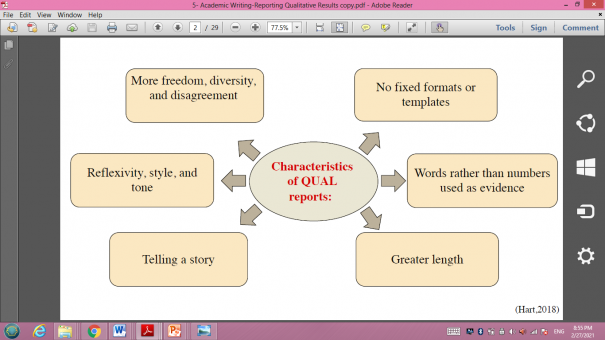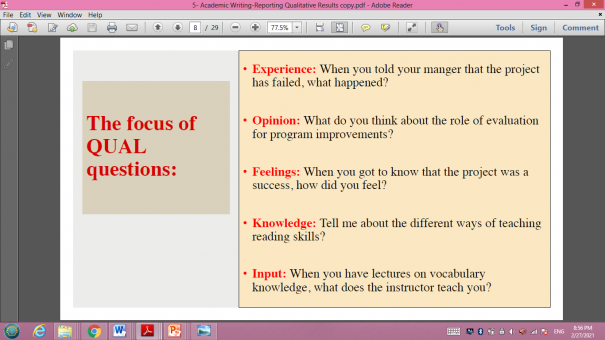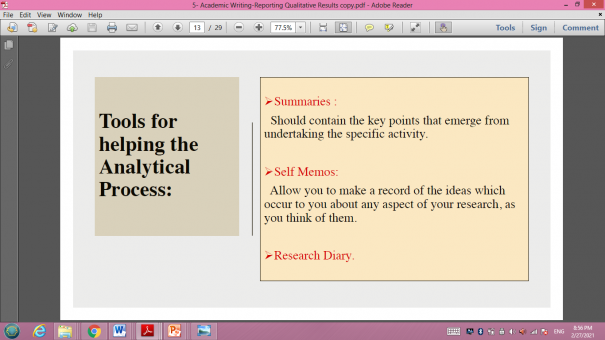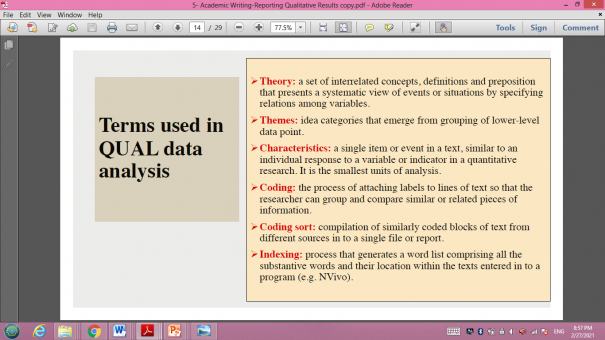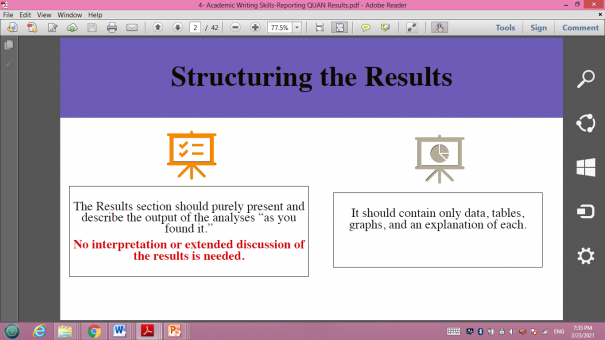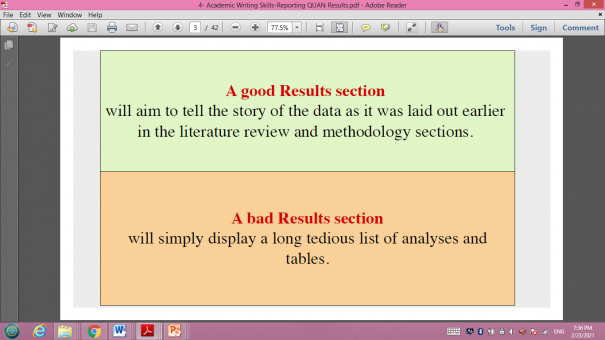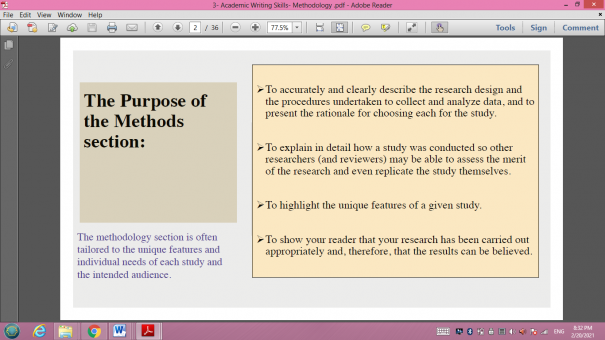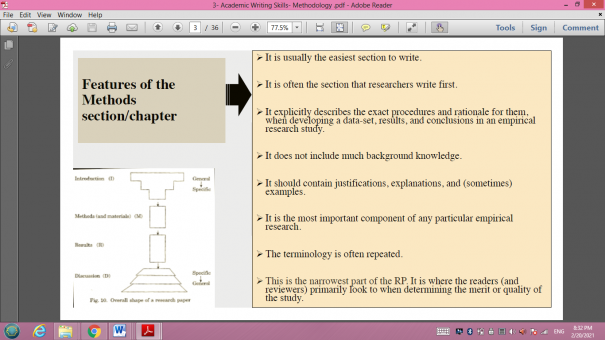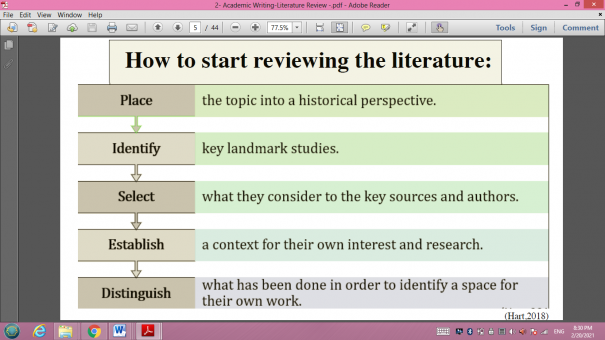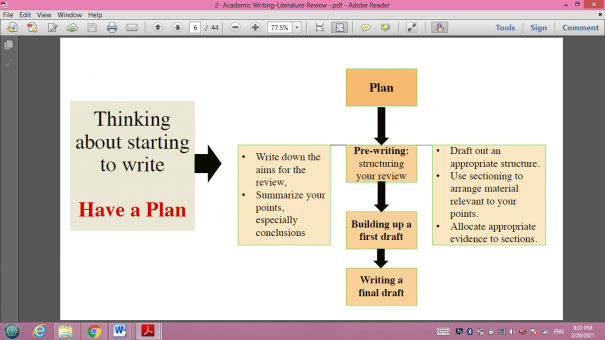Academic Writing Webinar: Session 5
On February 24, 2021, the Women's Scientific Research Committee of the Bachelor of Arts in English program organized the fifth session of webinars on academic writing by Dr. Nada Alqarni. This session was designed to explore reporting qualitative results of scientific research papers.
Dr. Nada Alqarni started the session by highlighting the purpose of qualitative reports. "It is designed to provide a rich and vivid description so that the reader can vicariously experience what it is like to be in the same situation as the research participants", said Dr. Alqarni. She also referred to the characteristics of qualitative reports. She indicated that these are such reports that have more freedom, diversity, and disagreement. There are no fixed formats to follow in writing such reports.
In addition, Dr. Alqarni described the structure of a qualitative report. Good qualitative reports display a smoothly flowing, natural rhythm of text and quotes. They provide some contextual information to the quotations concerning the social situation and the communicative context. This kind of report deals with data that are not easily reduced to numbers. "Data that are related to concepts, opinions, values and behaviors of people in social contexts", she illustrated. These could be transcripts of individual interviews and focus groups, field notes from observation of certain activities, copies of documents, or audio/video recordings. She further defined qualitative analysis as the range of processes and procedures whereby we move from qualitative data that have been collected into some form of explanation, understanding or interpretation of the people and situation being investigated. It is usually based on an interpretive philosophy. The idea is to examine the meaningful and symbolic content of qualitative data.
The approaches in the analysis are both deductive and inductive. The "deductive approach" is used when time and resources are limited. It is generally used when qualitative research is a smaller component of a larger quantitative study. On the other hand, the "inductive approach" is used when qualitative research is a major design of the inquiry. It is implemented using an emergent framework to group the data and then look for relationships.
Dr. Alqarni identified the steps for writing the report, the tools for helping the analytical process, and the variation in the format and language use.
The webinar, which was organized primarily for MA & Ph.D. students, witnessed resounding success and was attended by staff members and postgraduate students from different faculties of the university. It is worthwhile to mention that attendees who will attend at least five of the seven webinars on academic writing will get a certificate of attendance after the end of sessions.
Date: 2/28/2021
Source: Dr. Amal Metwally - Head of Scientific Research Committee

